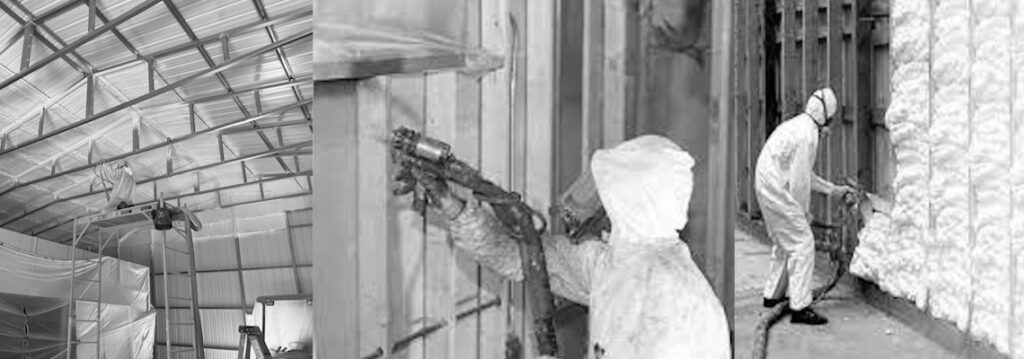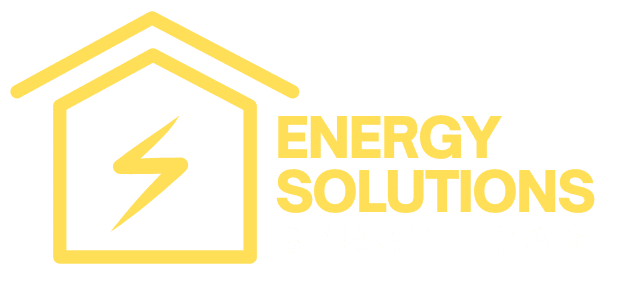FAQ - Spray Foam Insulation

1. What is spray foam insulation?
Spray foam insulation is a type of insulation material that is applied in liquid form and then expands into a foam. It is typically used to insulate walls, roofs, attics, and other areas of a building to prevent heat loss or gain and improve energy efficiency.
2. What are the benefits of spray foam insulation?
Spray foam insulation offers several benefits, including:
- Excellent thermal insulation: Spray foam forms an airtight seal, preventing heat loss in the winter and heat gain in the summer. This helps to maintain a consistent indoor temperature, improve energy efficiency, and reduce heating and cooling costs.
- Superior air sealing: Spray foam expands and fills gaps, cracks, and voids, creating a seamless barrier. It effectively seals out drafts, dust, pollen, and other allergens, improving indoor air quality and reducing the entry of outdoor pollutants.
- Noise reduction: The dense structure of spray foam insulation helps to dampen sound transmission, reducing noise pollution from outside sources and between rooms. This can enhance the comfort and tranquility of your living or working environment.
- Increased structural strength: Once applied, spray foam insulation adheres to surfaces and can add structural integrity to walls, roofs, and other areas. It can help to strengthen buildings and provide reinforcement against strong winds and impact.
- Moisture and mold resistance: Closed-cell spray foam is impermeable to moisture, making it an effective barrier against water vapor and preventing condensation issues. This reduces the risk of mold and mildew growth, enhancing the durability and longevity of the building.
3. Is spray foam insulation energy-efficient?
Yes, spray foam insulation is highly energy efficient. It provides excellent thermal insulation by creating an airtight seal that minimizes heat transfer. This means that in the winter, it prevents warm air from escaping and cold air from entering, helping to keep your home or building warm and comfortable. In the summer, it acts as a barrier, preventing hot air from entering and cool air from escaping, keeping your space cool and reducing the need for excessive air conditioning.
The air sealing properties of spray foam insulation are particularly effective in comparison to other insulation materials. Spray foam expands and fills gaps, cracks, and voids, providing a seamless and continuous insulation layer. This significantly reduces air leakage and drafts, which can account for up to 40% of a building’s energy loss.
4. Can Spray Foam Insulation Reduce Utility Bills?
4. Yes, spray foam insulation can help reduce utility bills. One of the main benefits of spray foam insulation is its ability to provide a high level of thermal insulation and create an airtight seal. This means that it helps to minimize heat transfer, keeping your home or building more energy-efficient.
In the winter, spray foam insulation prevents warm air from escaping, and cold air from entering, helping to maintain a consistent and comfortable temperature inside. This reduces the workload on your heating system, resulting in lower energy consumption and reduced heating costs.
Similarly, in the summer, spray foam insulation acts as a barrier, preventing hot air from entering and cool air from escaping. This helps to keep your space cool and reduces the need for excessive air conditioning, leading to lower energy usage and reduced cooling costs.
5. Is Spray Foam Insulation Safe for My Health and the Environment?
Spray foam insulation, when installed correctly and by trained professionals, is generally considered safe for the environment and your health. However, it’s important to be aware of some considerations:
1. Environmental Impact: Spray foam insulation does have a certain environmental impact due to its manufacturing process and the materials used. The blowing agents in some older formulations of spray foam insulation, known as hydrofluorocarbons (HFCs), were found to have high global warming potential. However, newer formulations now use more environmentally friendly blowing agents with lower global warming potential, such as hydrofluoroolefins (HFOs). It’s recommended to inquire about the specific formulation of the spray foam insulation being used to ensure it meets current environmental standards.
2. Installation Safety: During the installation process, certain precautions should be taken. The chemicals used in spray foam insulation can be harmful if not handled correctly. It’s essential that a professional installer follows proper safety protocols, including wearing protective gear and ensuring adequate ventilation during and after installation. Once the foam has fully cured, it is generally considered safe.
3. Off-Gassing: Like many construction materials, spray foam insulation may off-gas volatile organic compounds (VOCs) after installation. These VOCs can contribute to poor indoor air quality and may cause health concerns for some individuals, particularly those with sensitivities or allergies. It is advisable to allow the foam to fully cure and ventilate the area well before occupying the space.
6. How Long Does Spray Insulation Last?
Spray foam insulation is known for its durability and longevity. When installed properly, it can have a lifespan of 20 to 30 years or even longer. However, the actual lifespan can vary depending on various factors such as the quality of the installation, environmental conditions, and maintenance.
One of the benefits of spray foam insulation is that it adheres to surfaces and creates an airtight seal, which helps prevent air infiltration and moisture buildup. This can contribute to the longevity of the insulation. Additionally, spray foam insulation does not typically degrade over time like some other insulation materials.
7. Can spray foam insulation help reduce noise transmission?
8. What factors determine the cost of spray foam insulation?
1. Area to be insulated: The total square footage of the area that needs insulation will directly impact the cost. Larger areas will require more material, equipment, and labor, thus increasing the overall cost.
2. Thickness and type of insulation: The thickness of the spray foam insulation can affect the cost, as a thicker application may require more material. Moreover, there are different types of spray foam insulation available, such as open-cell and closed-cell foam, and their costs can vary.
3. Accessibility and complexity: The accessibility and complexity of the area to be insulated can impact the cost. If it is easy to access and requires minimal preparation, the cost may be lower. However, if the area is difficult to reach and requires a Hi Lift or scaffolding, the cost may increase due to additional labor and equipment required.
4. Local labor and material costs: The cost of spray foam insulation can also vary based on the location and the prevailing labor and material costs in that area. Different regions have different market rates, so it’s essential to consider local factors when estimating the cost.
5. Additional services: Depending on the specific needs of the project, there may be additional services required, such as surface preparation, removal of old insulation, or air sealing. These additional services can contribute to the overall cost.
9. Will spray foam insulation attract pests, like rodents or insects?
Spray foam insulation, when properly installed, can act as a barrier against pests like rodents and insects. However, it is not entirely immune to pest intrusion. Here are a few things to consider:
1. Rodents: Spray foam insulation can deter rodents because it has no nutritional value and can be difficult for them to chew through. However, if there are existing entry points or gaps around the insulation, rodents may still find a way in. It’s important to ensure that all potential entry points are properly sealed with materials that rodents cannot easily penetrate.
2. Insects: Spray foam insulation can help prevent insect infestations by sealing gaps and cracks in your home. However, some insects, such as termites, can still cause damage. If you live in an area prone to termite activity, it is advisable to take additional precautions, like regular inspections and treatments.
3. Moisture concerns: Pests are attracted to damp environments. Spray foam insulation helps to create an air-tight seal, reducing the chance of moisture intrusion. However, if there are existing moisture issues within the structure, it can create an attractive environment for pests. Addressing any moisture problems before installing spray foam insulation is crucial.
10. How does spray foam insulation compare to other insulation materials, such as fiberglass or cellulose?
When comparing spray foam insulation to other materials like fiberglass or cellulose, there are a few key factors to consider:
1. Insulation performance: Spray foam insulation has excellent insulation properties due to its ability to create an air-tight seal and provide a higher R-value per inch compared to traditional materials. It can effectively reduce air leakage and minimize heat transfer, leading to better energy efficiency and improved comfort in your home.
2. Air sealing: One of the significant advantages of spray foam insulation is its ability to act as an air barrier. It can seal small cracks, gaps, and crevices that may be missed by other insulation materials, helping to prevent drafts and reduce energy loss due to air infiltration.
3. Moisture protection: Spray foam insulation has a closed-cell structure that helps to resist moisture intrusion. It can help prevent issues like condensation, mold, and mildew growth within the building envelope. Fiberglass and cellulose insulation, on the other hand, may absorb moisture and can lose their insulating properties when wet.
4. Installation: Spray foam insulation requires professional installation, as it involves specialized equipment and expertise. It is typically applied by trained installers who ensure proper mixing and application to achieve optimal results. Fiberglass and cellulose insulation, on the other hand, can be installed as a DIY project, although professional installation is still recommended for the best performance.
5. Cost: Spray foam insulation is generally more expensive upfront compared to fiberglass or cellulose insulation. However, it offers long-term energy savings that can help offset the initial investment. The cost of insulation also depends on factors such as the size of the area to be insulated, local labor rates, and material availability.
Ultimately, the choice of insulation material depends on various factors like your budget, specific needs, climate conditions, and construction type. It is advisable to consult with insulation professionals or contractors who can assess your situation and recommend the most suitable insulation solution for your home.
11. Does spray foam insulation require any special maintenance or upkeep?
Spray foam insulation generally does not require any specific maintenance or upkeep once it has been properly installed. However, here are a few considerations to keep in mind:
1. Inspection: It is a good practice to periodically inspect your insulation to ensure there are no visible signs of damage, such as cracks, gaps, or areas where the foam may have deteriorated. If you notice any issues, it is recommended to contact a professional to assess and address the problem.
2. Moisture management: While spray foam insulation is resistant to moisture, it is still important to address any potential sources of water intrusion in your home. Properly maintaining the building envelope, including the roof, windows, and foundation, will help prevent moisture-related problems that can impact the performance of any insulation material, including spray foam.
3. Pest control: Spray foam can act as a barrier against pests, but it is not a foolproof solution. Regular pest control measures should still be taken to prevent any infestations. Seal off any entry points and maintain a clean environment to deter pests from infiltrating your home.
4. Sealed penetrations: If you need to make any modifications or repairs that require drilling or cutting through the foam insulation, it is essential to properly seal those penetrations afterward. This ensures that the air barrier provided by the spray foam remains intact, maintaining its effectiveness.
Overall, spray foam insulation is a durable and long-lasting option that typically requires minimal maintenance. However, it is always a good idea to stay vigilant and address any issues proactively to ensure optimal performance and energy efficiency.
